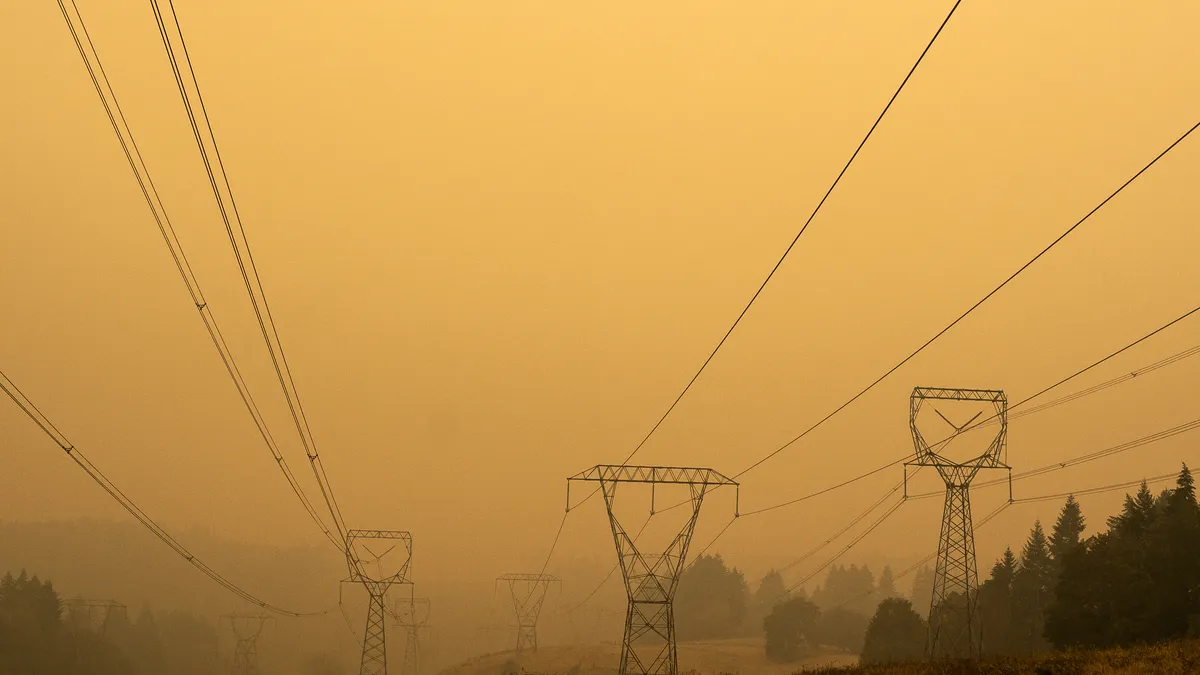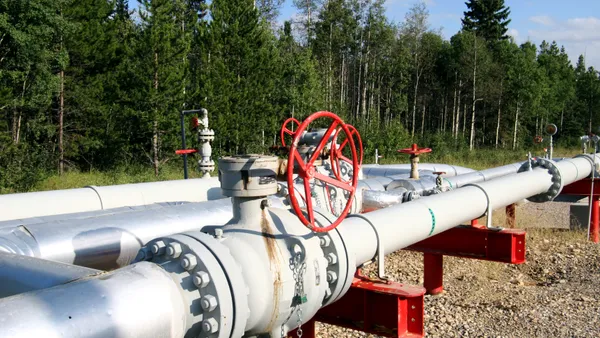Dive Brief:
- Pacific Gas & Electric (PG&E) has reached settlements totalling $55 million with authorities from six Northern California counties regarding the 2019 Kincade Fire and 2021 Dixie Fire, the utility announced Monday.
- As part of the settlements, the utility also committed to multiple wildfire safety and response efforts, including creating a direct claims program for people who lost their homes in the Dixie Fire, as well as helping community colleges expand their wildfire safety training.
- “We are committed to doing our part, and we look forward to a long partnership with these communities to make it right and make it safe,” PG&E Corp. CEO Patti Poppe said in a statement.
Dive Insight:
In July of 2020, California officials confirmed that the 2019 Kincade Fire – which burned roughly 78,000 acres in Northern California – was caused by PG&E’s transmission lines. And in July of 2021, PG&E reported in a regulatory filing that it expected to incur a loss connected to the Dixie Fire.
With the agreements announced on Monday, the utility will avoid criminal charges related to the Dixie Fire and the criminal complaint filed against it regarding the Kincade Fire will be dismissed. According to the utility, more than $35 million of the money included in the settlements will be paid to non-profit organizations like fire departments and local schools, and the utility will also pay $7.5 million to Sonoma County, as well as $1 million each to five counties, in civil penalties related to the Kincade and Dixie fires respectively. These costs will not be passed on to PG&E’s customers.
The utility also made a series of safety-related commitments as part of the settlements. For instance, it plans to add up to 200 jobs across six counties to increase its local expertise and presence, as well as conduct a series of inspections on vegetation management and equipment, which will be overseen by an independent monitor. PG&E will also create a program whereby people who lost their homes in the Dixie Fire can submit claims and receive payments.
The district attorneys of five counties that participated in the Dixie Fire settlement said in a joint press release on Monday that they decided to pursue a civil prosecution rather than criminal prosecution against PG&E to “maximize the return” to victims of the fire. The maximum criminal fines that could have been extracted from the utility would have been a little under $330,000.
Last December, the CPUC approved a resolution whereby PG&E shareholders were required to pay $40 million to California’s general fund, as well as refrain from recovering $85 million in costs from ratepayers, for violations related to the Kincade Fire.
The recent settlements will not replace the regulatory investigations into the liability that PG&E will face regarding the Dixie Fire, Mark Toney, executive director of ratepayer advocate The Utility Reform Network, said.
The PUC is still in the process of trying to figure out whether the utility was negligent and failed to comply with safety regulations, Toney said, and if PG&E is found to be negligent, the utility will be prohibited from drawing from the wildfire insurance fund that California lawmakers set up in 2019.
California’s three largest investor-owned utilities can tap into the fund to reimburse damage claims paid out to victims of the fires caused by their power lines. However, they are subject to certain conditions, including receiving a determination from the CPUC that they have “acted reasonably.”
Utilities that receive safety certifications from California’s Office of Energy Infrastructure Safety are presumed to have acted reasonably unless otherwise proven.
PG&E has consistently been receiving safety certifications, which “puts them on a course where they can tap the wildfire fund in a fairly straightforward way,” John Bartlett, president of Reaves Asset Management, said. “The situation in place sets the ongoing liability for PG&E to be quite manageable."















